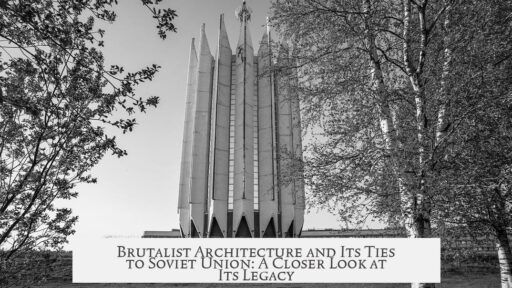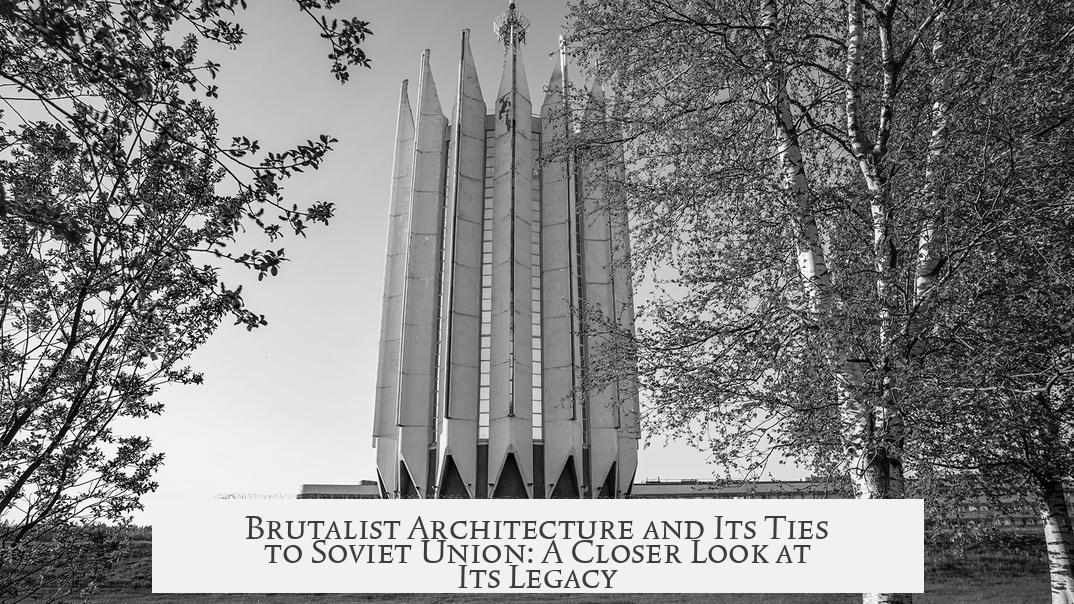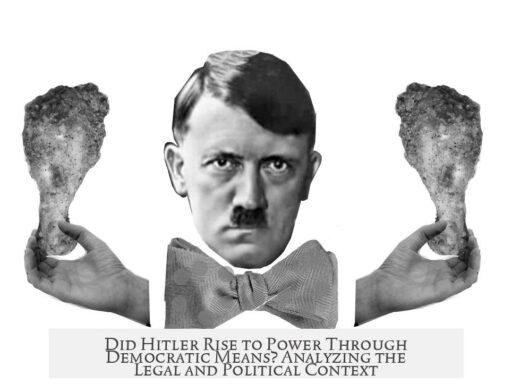The association of Brutalist architecture with the Soviet Union stems from the USSR’s wide adoption of Brutalist styles and building methods during its postwar reconstruction and urban expansion. This connection reflects practical needs, imported techniques, centralized planning, and ideological goals in Soviet architecture from the 1950s through the Brezhnev era.
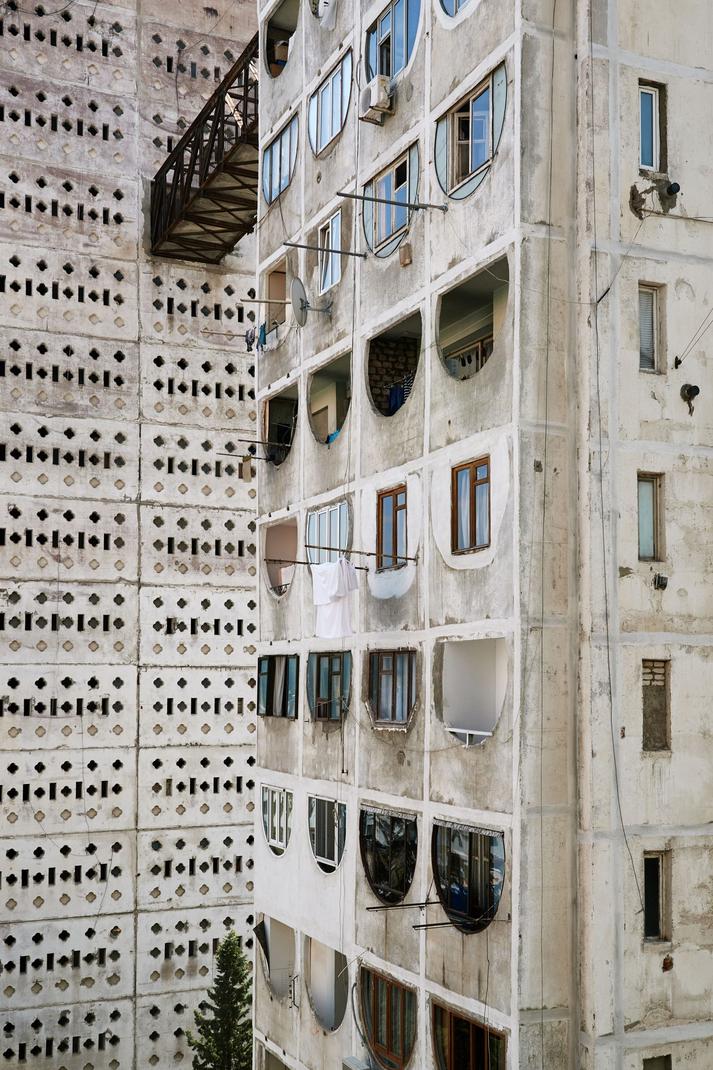
The Soviet Union faced a massive housing shortage after World War II. Rapid urbanization and industrial recovery demanded large-scale solutions. Brutalist architecture, characterized by massive concrete structures and functional design, fit this purpose. It provided a practical, cost-effective means to quickly construct residential and public buildings. Reinforced concrete (rebar) was central to this style and widespread construction method.
Brutalism initially emerged in the West as a modern, cutting-edge architectural style. It celebrated raw materials and structural honesty, often emphasizing exposed concrete and geometric forms without ornamentation. In the USSR, brutalism was embraced not only for practicality but also as a symbol of utopian ideals. Architects saw it as an egalitarian style appropriate for a socialist society. It represented progress and collective values.
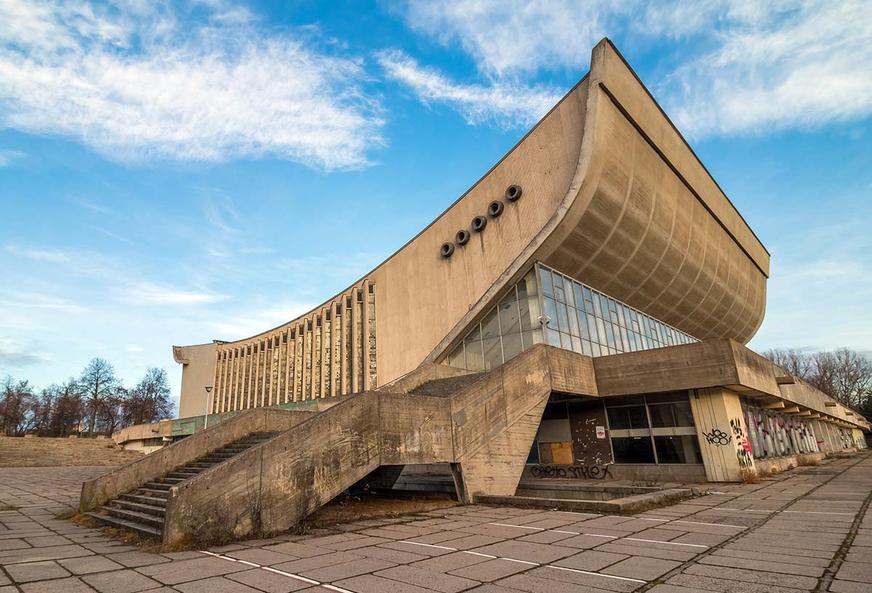
Western countries gradually shifted away from Brutalism by the late 20th century, favoring postmodern or more decorative styles. However, the Eastern Bloc, including the Soviet Union, continued large-scale Brutalist construction well into the Brezhnev era. This persistence reflected economic stagnation and a waning ability to compete technologically. Brutalist buildings became symbols of a Soviet state emphasizing function over aesthetic innovation.
The development of Soviet Brutalism is closely tied to industrial architecture and international collaboration. In the 1930s, the Soviet government worked with American architect Albert Kahn’s firm. Kahn pioneered reinforced concrete techniques in Detroit’s industrial centers around 1895. His methods replaced wood framing with steel-reinforced concrete, improving fire resistance and allowing flexible interior layouts.
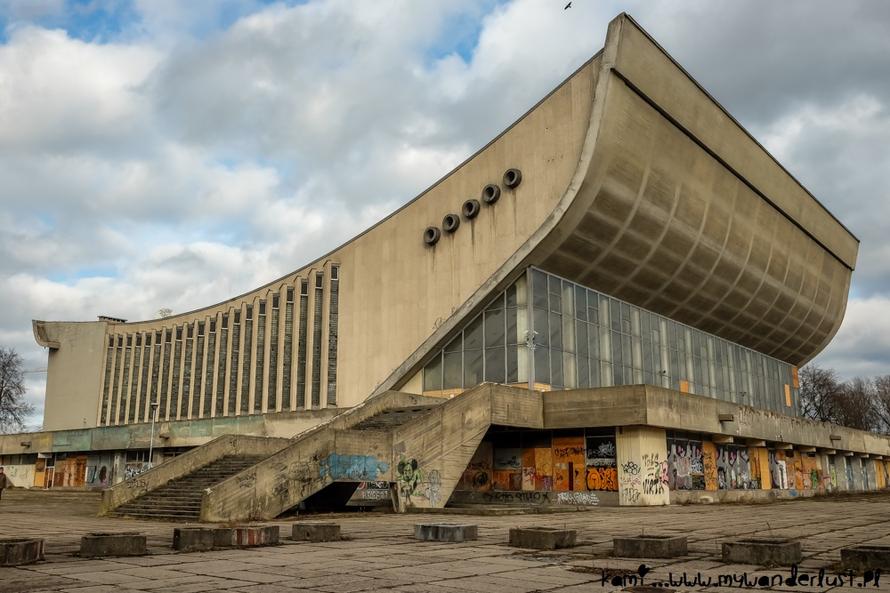
The Soviet-American cooperation led to the 1929 construction of the Stalingrad Tractor Factory, a major industrial project. Kahn’s firm was appointed consulting architects for Soviet industrial construction. They also helped establish an architectural academy in Moscow, which trained about 4,000 architects and engineers. This created a consistent architectural standard across the USSR, with a focus on speed, efficiency, and utility.
The Soviet architecture system was highly centralized. Almost all Soviet architects working in this period were connected to this institutional framework. Strict building codes dictated standardized designs that prioritized form following function. This approach met urgent postwar demands and supported mass urban housing and industrial projects. The result was widespread, mostly uniform Brutalist urban landscapes.
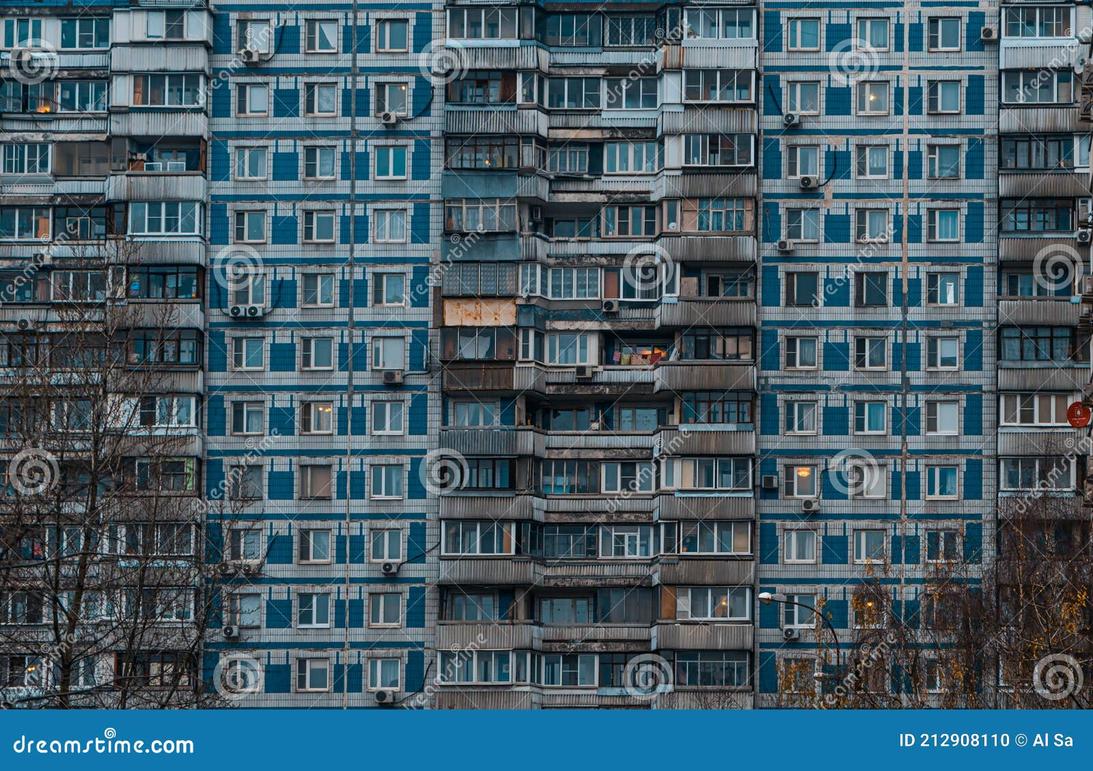
| Aspect | Details |
|---|---|
| Postwar Needs | Severe housing shortage; industrial rebuilding |
| Building Material | Reinforced concrete (rebar), imported American technology |
| Architectural Style | Brutalism – raw concrete, minimal decoration, functional |
| Ideology | Utopian, egalitarian symbolism; socialist values |
| Planning | Centralized, standardized building codes; mass housing |
| International Influence | Albert Kahn firm’s industrial design, Soviet-American collaboration |
| Western Shift | West moved on; Eastern Bloc retained Brutalism longer |
| Symbolism | Reflects Brezhnev-era stagnation; functional over innovation |
Brutalism in the Soviet Union became emblematic of more than architecture. It signified centralized planning, industrial achievement, and postwar recovery efforts. The style embodied values of utilitarianism and collectivism promoted by Soviet ideology. Its extension into the late Soviet period symbolizes a nation focused on maintenance rather than innovation.
Today, many Soviet Brutalist buildings remain. They stand as reminders of a unique architectural era and political context. These structures often evoke debates on preservation versus demolition due to their austere appearance and cultural significance. Scholars see Soviet Brutalism as part of a broader story of Cold War architectural history, blending Western influence and Soviet reality.

- The Soviet association with Brutalism arises from the urgent postwar housing and industrial needs requiring rapid, efficient construction.
- Reinforced concrete technology, imported from the U.S., enabled large-scale Brutalist structures in the USSR.
- A centralized architectural education system ensured shared Brutalist design principles across Soviet cities.
- The style represented both socialist ideals and eventually symbolized economic stagnation during the Brezhnev years.
- The persistence of Brutalism in the Eastern Bloc contrasts with Western architectural shifts away from this style.
- Soviet Brutalism reflects a fusion of modern industrial techniques, political ideology, and practical urban planning.
Why Do We Associate Brutalist Architecture with the Soviet Union?
Brutalist architecture screams Soviet Union because of the USSR’s massive postwar housing projects, reliance on reinforced concrete, and the style’s symbolic connection to Soviet ideologies and economic realities. It’s not just an accident of style—it’s a direct reflection of history, politics, and industry all rolled into one massive concrete slab.
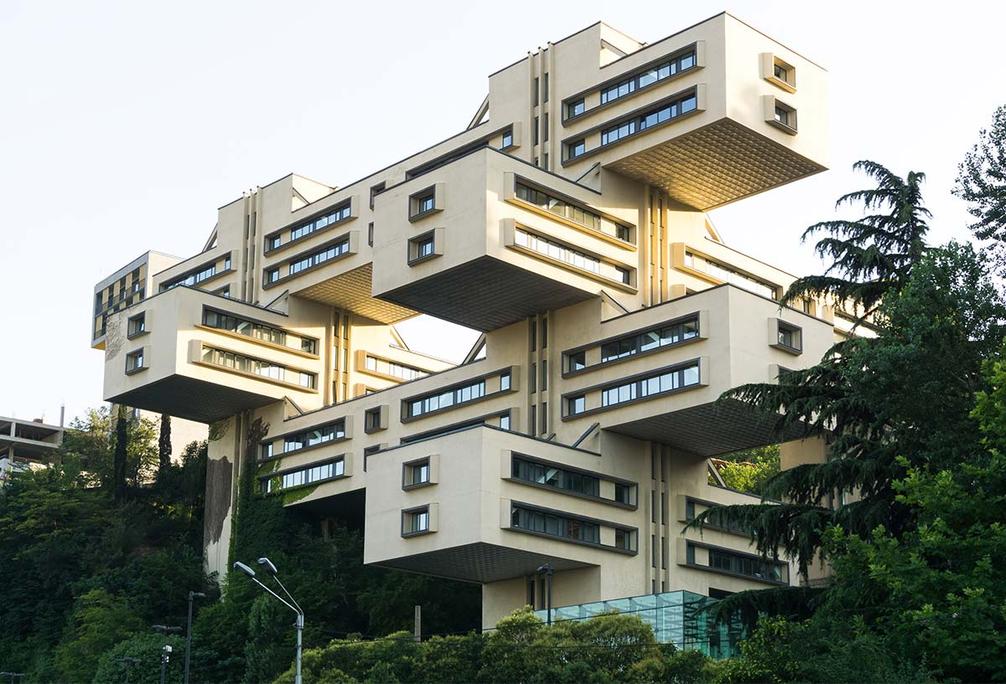
But why concrete and sharp angles? And how did Brutalism, which had Western roots, become the architectural signature of the Eastern Bloc? Let’s dig into the fascinating story behind this concrete jungle.
The Postwar Housing Crisis: Brutalism’s Perfect Playground
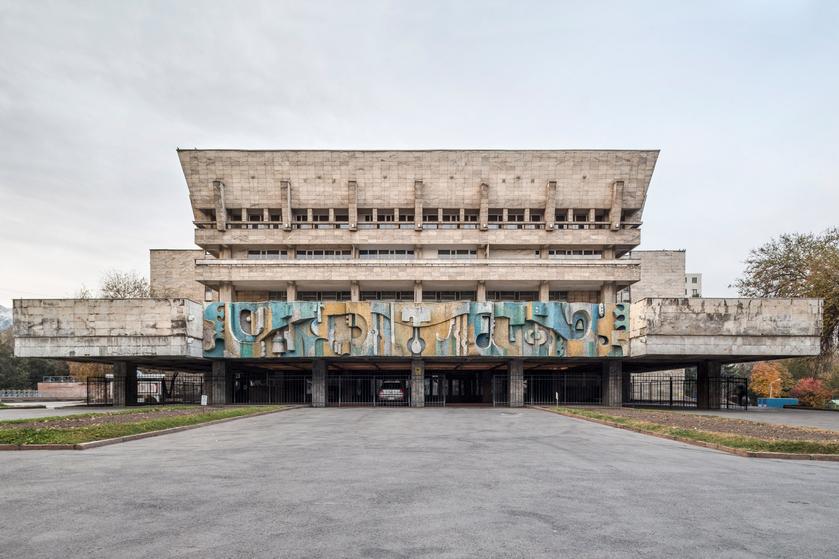
After World War II, the Soviet Union faced a massive housing shortage. Cities were damaged, populations boomed, and people needed places to live—fast. Enter Brutalist architecture. This style, with its bold shapes and heavy use of reinforced concrete (known as rebar), was like the Swiss Army knife for rapid construction.
Believe it or not, in the 1950s and 60s, Brutalism was cutting-edge and even celebrated in Western countries. So when the USSR adopted it, they were following a modern trend focused on speed and utility.
“This architectural style did alleviate the postwar housing shortage,” says many historians.
Unlike ornate Baroque or delicate Art Deco, Brutalism was bold and straightforward. Its raw concrete surfaces and minimal detailing meant buildings could be erected quickly and affordably while still looking futuristic. Many architects saw Brutalism as a utopian and egalitarian style—perfect for a Soviet society striving for collective equality.
Architectural Lineage and Standardization: The Soviet Recipe
Curiously, most Soviet architects from this era came from a common origin: a centralized firm tightly controlled by the government. This explains the repetitive shapes and uniformity in Soviet Brutalist buildings. It’s like a giant concrete factory crankin’ out the same design over and over, but hey, when you’re tasked with housing millions, variety isn’t your friend.
The technology behind these structures traces back to an American architect named Albert Kahn. In the early 1930s, the Soviet Union struck a deal with Kahn’s firm to build their first massive industrial factory—the Stalingrad Tractor Factory. From there, Kahn’s team set the template for reinforced concrete construction across the USSR.
- Reinforced concrete technique replaced wood with steel rebar for strength and fire resistance.
- A special architectural academy in Moscow trained around 4,000 architects using these principles.
- Strict building codes prioritized form following function to maximize efficiency.
Fun fact: The collaboration between Soviet officials and American architects sounds unlikely today, but it helped shape the Soviet cityscape for decades.
Why Didn’t the Eastern Bloc Shift Away Like the West?
While Western architects started moving away from the stark, raw Brutalist style by the 1970s, Eastern Bloc countries stuck with it. Why? For one, brutal, large-scale ferro-concrete buildings fit the ideology and practical needs of Soviet society—they symbolized strength, durability, and egalitarianism.
But there’s another layer. By the time leaders like Leonid Brezhnev headed the USSR in the 70s, the country’s economy was slowing down. Brutalist buildings became a symbol of economic stagnation, reflecting a Soviet state that was no longer racing ahead but trying to maintain speed.
“The style was an apt symbol for a Soviet state that was no longer as competitive or cutting-edge as it once was,” notes architectural scholars.
So Brutalism is not just concrete and form; it’s a mirror reflecting broader historical realities.
But Brutalism Is More Than Just Gray Boxes
Sure, critics often call Brutalist buildings cold or harsh. But if you’ve lived near one, you know they’re practical and sometimes surprisingly beautiful. These structures survived harsh Soviet winters and were easy to maintain—traits every architect dreams of.
Think about your daily commute. Those wide concrete apartment blocks housed millions, shaping everyday life, communities, schools, and workplaces.
What Can We Learn from the Soviet Brutalist Legacy?
First, architecture is never just about looks. It’s about context. These buildings tell stories about politics, economy, and society. From a design perspective, Brutalism teaches us about the power of material honesty—steel and concrete in their raw state.
Second, this style reminds us that rapid urbanization demands efficient solutions. Today, cities worldwide face housing shortages again amid population booms. Maybe revisiting Brutalism’s ethos is worth it, but with a modern twist that includes sustainability and aesthetic warmth.
Final Takeaway
When you spot a massive concrete block looming over a cityscape, think of it as a Soviet-era time capsule. It’s not just a building; it’s a symbol of a global architectural experiment merged with geopolitical forces and economic realities. The Soviet Union didn’t just adopt Brutalism—they made it their own, for better or worse.
So next time you wonder why we equate Brutalist design with the USSR, remember these were more than design choices. They were responses to urgent needs, infused with ideology and reinforced by collaboration that crossed oceans, from Detroit to Moscow.
Brutalism and the Soviet Union: a partnership forged in reinforced concrete, urgency, and vision—sometimes stark, sometimes bleak, but always unmistakably bold.
Why did the Soviet Union favor Brutalist architecture after World War II?
The USSR faced a severe postwar housing shortage. Brutalist architecture, with its use of reinforced concrete, provided a fast and efficient way to build large-scale housing and industrial buildings. This made it a practical approach during rapid urban growth.
How did American architecture influence Soviet Brutalism?
Albert Kahn’s Detroit firm pioneered reinforced concrete techniques, which the USSR adopted for fire-prevention and flexible interiors. The Soviet government collaborated with Kahn’s firm, using their expertise for industrial projects and architectural training.
Why did Brutalist architecture remain popular in the Eastern Bloc after it declined in the West?
While Western countries moved away from Brutalism, the Eastern Bloc continued its use due to centralized planning and standardized codes. It fit state goals of fast, large-scale construction despite its austere style.
What ideological ideas did Brutalism represent in the Soviet Union?
Architects saw Brutalism as a utopian and egalitarian style. It reflected the Soviet vision of a modern, industrial society and collective progress, aligning with postwar socialist principles.
How did Soviet architectural training contribute to the spread of Brutalism?
An academy in Moscow, led by the Kahn family, trained thousands of architects under strict codes. This centralized education resulted in many similar Brutalist buildings across the Soviet Union.
What did Brutalist architecture symbolize during the Brezhnev era?
The style came to represent economic stagnation and a lack of innovation. Buildings highlighted the Soviet state’s decline from its earlier cutting-edge status.
